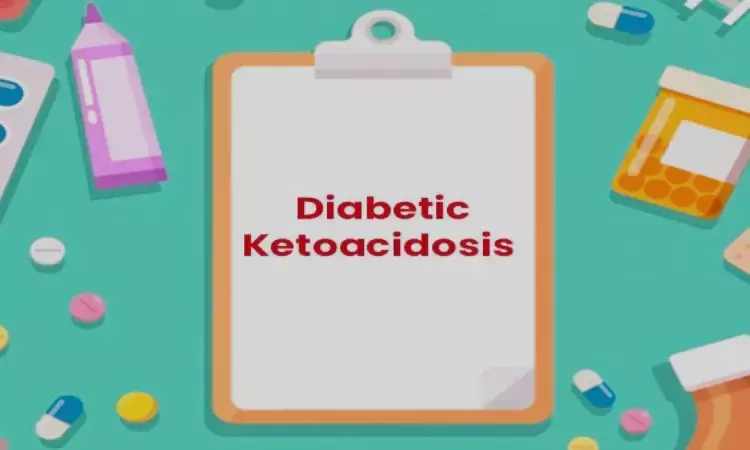- Home
- Medical news & Guidelines
- Anesthesiology
- Cardiology and CTVS
- Critical Care
- Dentistry
- Dermatology
- Diabetes and Endocrinology
- ENT
- Gastroenterology
- Medicine
- Nephrology
- Neurology
- Obstretics-Gynaecology
- Oncology
- Ophthalmology
- Orthopaedics
- Pediatrics-Neonatology
- Psychiatry
- Pulmonology
- Radiology
- Surgery
- Urology
- Laboratory Medicine
- Diet
- Nursing
- Paramedical
- Physiotherapy
- Health news
- Fact Check
- Bone Health Fact Check
- Brain Health Fact Check
- Cancer Related Fact Check
- Child Care Fact Check
- Dental and oral health fact check
- Diabetes and metabolic health fact check
- Diet and Nutrition Fact Check
- Eye and ENT Care Fact Check
- Fitness fact check
- Gut health fact check
- Heart health fact check
- Kidney health fact check
- Medical education fact check
- Men's health fact check
- Respiratory fact check
- Skin and hair care fact check
- Vaccine and Immunization fact check
- Women's health fact check
- AYUSH
- State News
- Andaman and Nicobar Islands
- Andhra Pradesh
- Arunachal Pradesh
- Assam
- Bihar
- Chandigarh
- Chattisgarh
- Dadra and Nagar Haveli
- Daman and Diu
- Delhi
- Goa
- Gujarat
- Haryana
- Himachal Pradesh
- Jammu & Kashmir
- Jharkhand
- Karnataka
- Kerala
- Ladakh
- Lakshadweep
- Madhya Pradesh
- Maharashtra
- Manipur
- Meghalaya
- Mizoram
- Nagaland
- Odisha
- Puducherry
- Punjab
- Rajasthan
- Sikkim
- Tamil Nadu
- Telangana
- Tripura
- Uttar Pradesh
- Uttrakhand
- West Bengal
- Medical Education
- Industry
Kids With Type 1 Diabetes With Ketoacidosis at Diagnosis Have High HbA1c and Increased Insulin Requirement: Study

USA: A study published in Diabetes Care found that the rate of diabetic ketoacidosis (DKA) at the time of type 1 diabetes diagnosis has increased in recent years.
Researchers analyzed data from over 9,000 children and discovered that those with DKA at diagnosis had higher glycated hemoglobin (HbA1c) levels, higher body mass index (BMI), and greater insulin requirements one and two years after diagnosis. These children were also more likely to experience subsequent DKA episodes, indicating a potential long-term impact on diabetes management.
The study was conducted by Klemen Dovc, University Medical Centre Ljubljana, and Faculty of Medicine, University of Ljubljana, Ljubljana, Slovenia, and colleagues to examine the link between diabetic ketoacidosis at the onset of type 1 diabetes and its impact on long-term glycemic control, insulin needs, BMI SDS, and the adoption of diabetes technology in youth.
For this purpose, the researchers analyzed data from nine countries—Austria, Czechia, Germany, Italy, Luxembourg, New Zealand, Slovenia, Switzerland, and the U.S. (Colorado)—focusing on youth aged 0.5 to 15.9 years who were diagnosed with type 1 diabetes between 2019 and 2020 and followed for two years. Based on their DKA status at diagnosis, participants were categorized into three groups: no DKA, nonsevere DKA, and severe DKA. The study assessed HbA1c levels, insulin requirements, BMI SDS, and the adoption of diabetes technology, including automated insulin delivery (AID).
The following were the key findings:
- The study included 9,269 participants, with 54.8% males and a mean age of 9.0 years.
- Diabetic ketoacidosis (DKA) at diagnosis was identified in 34.2% of participants, with 12.8% experiencing severe DKA.
- After one year, the adjusted mean HbA1c was highest in the severe DKA group (7.41%), compared to the nonsevere DKA group (7.23%) and the no DKA group (7.14%).
- This difference remained evident after two years, with mean HbA1c levels of 7.58% in the severe DKA group, 7.38% in the nonsevere DKA group, and 7.32% in the no DKA group.
- Both DKA groups exhibited higher BMI SDS compared to those without DKA.
- Automated insulin delivery (AID) use was linked to lower HbA1c levels than other treatment methods.
- AID use also reduced the differences in HbA1c levels among the DKA groups after two years of follow-up.
"The findings suggest that both severe and nonsevere DKA at the onset of type 1 diabetes are linked to persistently elevated HbA1c levels and higher BMI SDS. However, automated insulin delivery use helps mitigate the impact of DKA at diagnosis on long-term glycemic control, reducing the differences in HbA1c levels over time," the researchers concluded.
Reference:
Klemen Dovc, Vit Neuman, Gemulla Gita, Valentino Cherubini, G. Todd Alonso, Maria Fritsch, Claudia Boettcher, Carine de Beaufort, Reinhard W. Holl, Martin de Bock; Association of Diabetic Ketoacidosis at Onset, Diabetes Technology Uptake, and Clinical Outcomes After 1 and 2 Years of Follow-up: A Collaborative Analysis of Pediatric Registries Involving 9,269 Children With Type 1 Diabetes From Nine Countries. Diabetes Care 2025; dc242483. https://doi.org/10.2337/dc24-2483
Dr Kamal Kant Kohli-MBBS, DTCD- a chest specialist with more than 30 years of practice and a flair for writing clinical articles, Dr Kamal Kant Kohli joined Medical Dialogues as a Chief Editor of Medical News. Besides writing articles, as an editor, he proofreads and verifies all the medical content published on Medical Dialogues including those coming from journals, studies,medical conferences,guidelines etc. Email: drkohli@medicaldialogues.in. Contact no. 011-43720751


